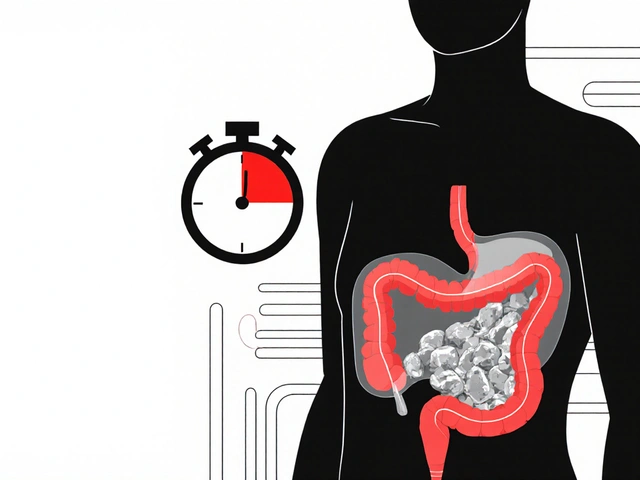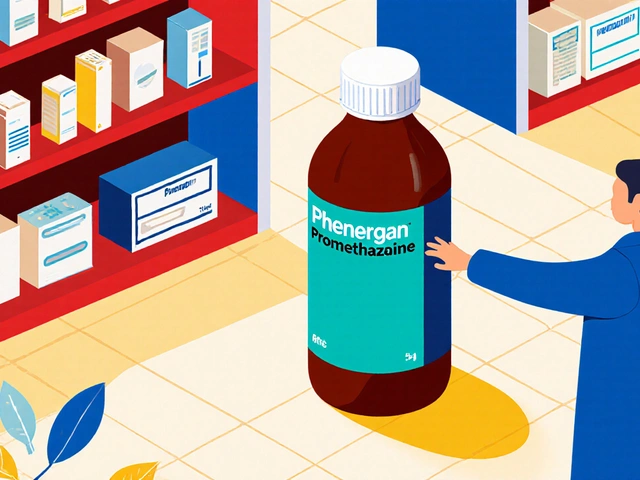A single hiccup can wreck a split, a lift, or your breathing rhythm. If you’re training hard, you don’t have minutes to spare. Here’s the good news: you can reduce how often hiccups hit, and you can shut them down quickly when they do. Expect clear steps you can use before, during, and after your session-no gimmicks, just what works for athletes in the real world.
Quick context: hiccups are a reflex of your diaphragm and glottis firing out of sync. In sport, that reflex gets triggered by stomach distension, air gulping, temperature swings, and frantic breathing. I’ve had them strike mid-interval on a cold, windy day in Belfast-right when I needed my lungs most. What follows is the playbook I wish I had then.
If you only remember one thing, remember this: managing breath cadence and stomach load is your edge. Dealing with hiccups during exercise is about prevention first, then fast, safe resets when they pop up.
TL;DR: Stop Hiccups Mid-Workout and Keep Training
- Prevention wins: time your meals (2-3 hours pre), avoid carbonation, warm up your diaphragm with slow nasal breathing, and sip-not chug-fluids.
- Mid-workout fixes: try a 10-second long exhale, paced nasal breathing (4 steps in, 4 out), or a brief Valsalva while paused. Sips of cold water can help reset the reflex.
- Fueling tweaks: smaller pre-session meals, low-fizz drinks, and easy-to-digest carbs reduce stomach stretch, a common hiccup trigger.
- When to worry: hiccups that last more than 48 hours, keep recurring off and on for days, or come with chest pain, vomiting, severe heartburn, fever, or neurological symptoms-see a doctor.
- Evidence base: physiology and management are consistent with clinical reviews (StatPearls 2024 on Singultus, UpToDate topic on hiccups) and hydration practices from the American College of Sports Medicine.
Why Athletes Get Hiccups (and What Actually Works)
Hiccups (singultus) are quick, involuntary contractions of the diaphragm followed by glottis closure-hence the “hic.” In sport, that reflex is more likely when the vagus or phrenic nerve gets irritated or when your stomach is stretched. Two levers you control: breathing mechanics and gut comfort.
The common sport-specific triggers:
- Rapid breathing shifts. Sprint to jog, or hard surges without a controlled exhale can destabilize the reflex arc.
- Stomach stretch. Big pre-workout meals, gels stacked too close together, or chugging sports drink builds pressure on the diaphragm.
- Temperature shocks. Ice-cold fluid hits or very hot liquids can trigger hiccups.
- Carbonation. CO2 expands in the stomach and ramps up distension.
- Air gulping. Drinking from wide-mouth bottles at speed, talking while running, or chewing gum can make you swallow air.
- Posture and tension. Over-bracing the trunk or lifting with a rigid neck can irritate the area around the diaphragm.
What actually helps, based on clinical reviews and sport practice:
- Breathing that lengthens your exhale. Extending exhalation boosts parasympathetic tone and can suppress the hiccup reflex loop. This matches clinical advice seen in StatPearls (updated 2024) and practical techniques taught in respiratory therapy.
- Small, regular sips. Hydration guidance from ACSM encourages starting sessions hydrated and replacing fluids to limit body mass loss to under ~2%. How you drink matters: smaller, steady sips lower the risk of belly stretch.
- Meal timing and simplicity. Giving your gut 2-3 hours for a normal meal to clear, or choosing a small snack 45-60 minutes before (low fat, low fiber) reduces distension.
- Brief vagal maneuvers. Gentle Valsalva, forced swallow, or controlled breath holds reset the reflex. These are standard non-drug options referenced in medical summaries like UpToDate.
Old-school tricks like peanut butter or spoonfuls of granulated sugar have mixed support. If one harmless method consistently works for you, great-just don’t rely on it mid-race when your stomach is already on edge.

Prevention: Warm-Up, Fueling, and Hydration That Don’t Trigger Hiccups
Preventing hiccups starts well before you start your watch. Think stomach-light, air-light, and rhythm-heavy.
Step-by-step before training or racing:
- Time your last meal. Aim for 2-3 hours pre-session for a normal plate. Keep it simple: rice or potatoes, lean protein, and a small amount of fat. If you must eat closer, take a light snack 45-60 minutes out-banana, a small yogurt, or a low-fiber bar.
- Choose flat fluids. Skip fizzy waters and carbonated sports drinks for pre-workout. If you love bubbles, have them after, not before.
- Pre-hydrate without flooding. A good rule: 5-7 mL/kg body mass about 2-3 hours before (aligned with ACSM guidance). For a 70 kg athlete, that’s 350-490 mL. Add a small top-up 30 minutes out if your urine is dark.
- Prime the diaphragm. Spend 3-5 minutes on this breathing warm-up: inhale through the nose 4 seconds, feel your lower ribs expand; exhale through pursed lips 6-8 seconds, letting the ribs drop. Do 8-10 cycles.
- Mobility and posture. Two moves: 10 cat-camels and 8 thoracic rotations per side. You’re freeing the rib cage so the diaphragm can move smoothly.
- Lock in a breath cadence. Runners: try 3 steps inhale, 3 steps exhale for easy pace; 2-2 for harder efforts. Lifters: breathe out on exertion, in on the reset. Cyclists: sync long exhales with steady cadence intervals.
During the session:
- Drink little, drink often. 2-3 mouthfuls every 10-15 minutes instead of big gulps. If it’s hot, increase frequency, not gulp size.
- Mind your bottle. A narrow spout reduces air swallowing compared with a wide-mouth chug.
- Fuel in bites. Half a gel every 10-15 minutes with sips of water rather than a whole packet at once. Chews? One or two pieces at a time.
- Keep your torso free. Avoid over-tightening belts or chest straps. Re-adjust packs so they don’t compress the upper abdomen.
- Temperature control. If cold drinks trigger you, go cool-not icy. If you’re heat-adapted, room-temp may be friendlier.
Here’s a quick triggers-to-fixes map you can steal:
| Trigger in Sport | What You’ll Feel | Countermove |
|---|---|---|
| Big pre-workout meal | Belly pressure, early hiccups | Shift to 2-3 h meal timing; smaller snack close to start |
| Carbonated drink | Burps, sudden hiccup bursts | Use flat water or non-fizzy sports drink |
| Air gulping from bottle | Bloated feel, awkward breaths | Narrow-spout bottle; smaller sips |
| Frantic breathing at start | Hiccups in first 5-10 min | Diaphragm warm-up; controlled 3-3 step breathing |
| Cold shock fluids | Immediate hiccup after sip | Switch to cool/room-temp fluids |
| Rigid trunk in lifting | Diaphragm tension, hiccups between sets | Exhale on exertion; rib mobility between sets |
What about electrolytes? They help fluid absorption and can support steady hydration. If you’re a salty sweater, a sodium-containing drink is useful, but sodium itself doesn’t stop hiccups. Your main win is avoiding stomach overload.
On-the-Spot Fixes: Safe Techniques You Can Use While Moving
When a hiccup hits mid-session, your goals are simple: reset the reflex fast, keep oxygen flowing, and avoid anything that risks faintness or injury. Pick a technique that matches your sport and the space around you.
Runner’s resets (keep moving unless you feel lightheaded):
- Long exhale drill. Inhale through the nose for 3 steps, exhale slowly for 6-8 steps. Do three cycles. If you need, back off pace 10-15 seconds per km for one minute.
- Pause-and-purse. Briefly step to the side, inhale normally, then exhale through pursed lips for 10-12 seconds as if blowing out a candle in slow motion. Repeat twice. Rejoin your pace.
- Cold sip reset. Two small sips of cool water, swallow deliberately. Avoid chugging.
- Gentle Valsalva. Stop for 10 seconds, pinch your nose and close your mouth, and gently blow against the closed airway for 5-10 seconds, then release and take one slow breath. Do not strain. Not for use while moving through crowds or on roads.
Cyclist’s resets:
- Cadence-exhale pairing. Maintain cadence, but for 3-4 breaths, make your exhale twice as long as your inhale.
- Straw sip. From a bite valve or straw, take two small sips with your head neutral. Avoid big head tilts that open your throat too much.
- Brief stop, gentle Valsalva. Pull off safely, then a controlled 5-10 second Valsalva as above.
Lifter’s resets:
- Set-to-set reset. Rack the bar, then take three 6-8 second pursed-lip exhales, hands around lower ribs to feel them drop.
- Exhale timing. On your next sets, make the hardest effort coincide with a steady exhale rather than breath-holding (unless your lift demands a brief brace-then reset fully between reps).
- Water swallow technique. Two small sips between sets, head in neutral.
Swimmer’s resets (safety first):
- Wall reset only. Do not hold your breath hard mid-lane. Stop at the wall, then perform two cycles of 4-second nasal inhale, 8-second slow exhale into the water.
- Cool sip at wall if allowed. No breath-holding drills that make you dizzy.
How long should you try? Give a reset 30-60 seconds. If hiccups ease, resume and keep your exhale lengthened for another minute. If they keep firing for more than 5 minutes, cut the intensity, walk or spin easy, and repeat the resets. If you feel chest pain, dizziness, or shortness of breath, stop and assess.
Things to avoid mid-workout:
- Gulping large amounts of drink to “force it down.” That usually makes it worse.
- Extreme breath-holds or aggressive Valsalva while moving. Risky for blood pressure changes and faintness.
- Sugar or sticky foods while running hard. Choking hazard and stomach upset.
If hiccups are a frequent mid-session problem for you, track patterns for a week: what you ate, drink type, temperature, warm-up, and the moment they begin (e.g., after a surge, after a cold sip). You’ll spot a trigger fast.

FAQs, Checklists, and When to See a Doctor
Quick checklist: pre-session
- Meal: 2-3 hours ago, simple carbs + lean protein.
- Snack (if needed): small, low fiber, 45-60 minutes out.
- Drink: flat, cool; pre-hydrate without chugging.
- Warm-up: 3-5 minutes of slow nasal inhale and long pursed-lip exhale.
- Gear: straps and belts adjusted to avoid upper-ab pressure.
- Plan: fuel in small bites; 2-3 mouthfuls fluid every 10-15 minutes.
Mid-workout decision tree
- First hiccup pops: slow your exhale for 30 seconds; try 3-4 cycles of extended exhale breathing.
- Still firing after 1 minute: add two small sips of cool water; repeat long exhale.
- Still on after 3-5 minutes: safely stop; try a gentle 5-10 second Valsalva; restart with controlled exhale cadence.
- Accompanied by chest pain, dizziness, wheeze, or vomiting: stop and seek medical evaluation.
FAQs
Are hiccups dangerous during exercise? Most hiccups are harmless and short-lived. They’re a performance problem more than a medical emergency. Danger signs are persistent (>48 hours), worsening, or paired with other symptoms like chest pain, severe heartburn, coughing up blood, fever, or neurological symptoms. In those cases, get checked.
Do electrolytes fix hiccups? Not directly. They help fluid balance and absorption, which supports steady hydration. Your real win is avoiding stomach overfilling and controlling breath cadence.
Can I keep training if I have hiccups? Yes, if they’re short-lived and you feel fine. Use a reset technique and temporarily reduce intensity. If they keep coming back during the same session, you’re probably fueling or breathing in a way that aggravates the reflex-adjust and reassess.
What about the spoonful of sugar trick? It may stimulate the swallow reflex and vagus nerve in some people. The evidence is mostly anecdotal. If it works for you when you’re not moving, okay. During hard running or riding, it’s messy and not ideal.
Why do I get hiccups right after gels? Rapid carb intake without enough water expands in the stomach and can irritate the esophagus. Split gels into halves and take them with small sips of water.
Do breathing masks or restrictive devices help? They can change the feel of breathing but won’t fix the reflex loop and may worsen air swallowing. I wouldn’t use them for this purpose.
When should I see a doctor? If hiccups last longer than 48 hours, keep coming back without obvious triggers, or come with chest pain, severe reflux, fever, shortness of breath, weight loss, or neurological symptoms. These could point to esophageal irritation, acid reflux, infection, or, rarely, nerve issues. Your GP can evaluate and, if needed, consider medications like baclofen, gabapentin, metoclopramide, or chlorpromazine-options discussed in clinical references like StatPearls and UpToDate. That’s medical territory, not a training tweak.
Coach’s notes (from the trenches): I’ve seen hiccups in runners who start too fast, in lifters who brace too hard, and in cyclists who chug on hills. The fix is usually the same: lighten the stomach load and lengthen the exhale. My wife, Liana Verney, swears by two slow sips and a long exhale when she gets them-simple and effective.
Sport-specific troubleshooting
- Endurance runner: If starts trigger hiccups, add a 6-8 minute controlled warm-up with nasal breathing and keep your first km 10-15 seconds slower than goal pace.
- Track interval day: Ditch the fizzy pre-workout. Take half-gels every rep with sips, not full gels between reps.
- Strength athlete: If hiccups hit after heavy bracing, add three slow exhales between sets and avoid gulping water immediately after a max attempt.
- Cyclist in heat: Switch to cool (not icy) drink, sip every 7-10 minutes, and avoid aggressive tempo jumps right after a big sip.
- Swimmer: Break up sets to allow wall resets. Keep fluids poolside at room temp.
What the science supports
- Mechanism: Hiccups involve a brainstem-mediated reflex with the diaphragm and glottis. Irritation of the vagus or phrenic nerves, or stomach distension, can set it off. This is covered in medical reviews such as StatPearls (Singultus, 2024 update).
- Non-pharmacologic care: Vagal maneuvers, breath training, and swallow techniques are first-line in clinical summaries (e.g., UpToDate). They’re safe and fit sport settings with minor tweaks.
- Hydration: ACSM’s exercise hydration guidance emphasizes starting hydrated and limiting dehydration to under ~2% of body mass-achieved by steady intake rather than large, infrequent gulps.
- When meds enter: For persistent or intractable hiccups, clinicians may consider baclofen, gabapentin, chlorpromazine, or metoclopramide-managed medically, not on the gym floor.
Put it all together: your five-part routine
- Before: eat simple, time it right, and avoid bubbles.
- Warm-up: 3-5 minutes of nasal inhale/long exhale breathing.
- During: sip small and often; fuel in bites; keep posture relaxed.
- If hiccups pop: slow exhale, sip cool water, add a gentle Valsalva if safe.
- After: note what triggered them; adjust next time.
If you’re training for an event, test this plan on regular sessions before race day. You don’t want your first hiccup battle during a final push down the home straight.







Liliana Lawrence
September 7, 2025 AT 22:49Sharmita Datta
September 8, 2025 AT 18:21mona gabriel
September 10, 2025 AT 15:29Phillip Gerringer
September 12, 2025 AT 06:05jeff melvin
September 14, 2025 AT 02:31Matt Webster
September 14, 2025 AT 23:35Stephen Wark
September 16, 2025 AT 01:34Daniel McKnight
September 17, 2025 AT 13:39Jaylen Baker
September 17, 2025 AT 18:28